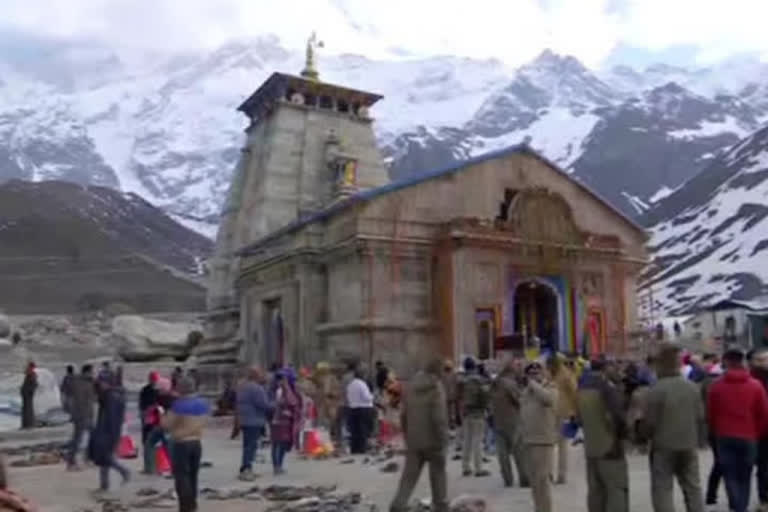Dehradun: After the Supreme Court's order, the width of Chardham All Weather Road in Uttarakhand will be reduced from two lanes to one and a half. However, since 70 per cent of the project has already been completed, the decision will have impact on a limited stretch. After the Supreme Court's order on PM Modi's dream All weather Road project people will have to be satisfied with 5.5 meter wide road rather than the 12 meter.
After the Supreme Court's order of September 8, from now on in the mountainous areas of Uttarakhand, where there are dense forest areas, the road width cannot be more than one and a half lanes or more than 5.5 meters.
What does the SC order say?
The Supreme Court on Tuesday ordered the Central government to comply with the 2018 circular of Ministry of Road Transport and Highways for constructing Char Dham National Highway connecting shrines at Yamunotri, Gangotri, Badrinath and Kedarnath in Uttarakhand.
As per the circular, the intermediate carriageway of 5.5m tarred surface has to be adopted in hilly terrain but the Centre wanted to make it 7m which the court refused to allow as it is the circular of government itself and they can not violate it.
What would be the difference?
Hariom Sharma, the head of the department of Uttarakhand PWD, said that till now 2 lane roads were being built under the All weather Road Project. Till now 12 meter road breadth meant 12 meter road cutting. On this, 8 to 10 meter road with 10 meter black top shoulder was being built. But now the road formation breadth will be reduced to around 9.5 to 10 meters. On which the black top will be 5.5 meters. It is called one and a half lane road with black top in the language of engineering. After the court's order, the road to be built now will have a difference of about two and a half to 3 meters width.
Road will be narrower
Work has to be done on about 175 km of road where the proposed width of the road will be one and a half lanes. The width of this road NH 58 which goes towards Badrinath and from Joshimath to Badrinath will be affected. The width of the road will be affected after the court's decision on the route going towards Gangotri from Uttarkashi and from Dharasu to Yamunotri on the route going towards Yamunotri. That is, the double lane highway that was going to be built earlier in these places will now be limited to one and a half lane.
Rule will be applicable to all roads in the state
The effect of this decision from the Supreme Court will be applicable to all the national highways of Uttarakhand. In the coming time, implementing this order on every national highway in Uttarakhand, especially in the mountainous region, the width of the NH will have to be kept only five and a half meters. This will also affect the other highways of the state.
This decision has also affected the Uttarakhand Public Works Department's exercise of double laning all the highways of the state in the next 5 years, but what will be its technical implication is yet to be known.
How did the controversy begin
The All weather road project was mired in controversy from the very beginning. Environmentalists had been raising questions on the felling of trees in the Himalayan region after which the matter reached the Supreme Court which appointed a high powered committee. However, there were differences of opinion in the high powered committee as well. One section of the committee presented before the Supreme Court the government of India’s 2018 circular which recommended the reduction of the width of all weather road. The Supreme Court passed an order to follow the 2018 circular.
Delay in Court order
Senior Uttarakhand journalist Jai Singh Rawat said that the Supreme Court’s decision came too late by which time 70 per cent of the road had already been constructed resulting in destruction of forest. Citing the 2001 ISRO report, he said ISRO had identified many landslide zones in Uttarakhand, which were a threat in the future. After the work of All weather Road, all those landslide zones of Uttarakhand have become active once again.
However, the decision of the Supreme Court has raised questions on the intentions of government departments. When the responsible government officials were aware of the circular of the year 2018, why then they did not bring this matter to the notice of the High Power Committee. Environmentalists and local people have suffered on account of this lapse. Had this work been done before then, there would have been no need for intervention of the Supreme Court and formation of any committee and the Chardham Yatra road would have been constructed at a cost of less than Rs 12,000 crores.
Also Read: Govt can't violate its own circular in Chardham project: SC



